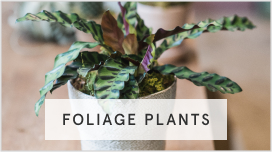Indoor plants face several challenges during the colder months. Temperatures vary from daytime heat to cold nights. Dry air, short days and limited light are less than ideal growing conditions for your houseplants. Even though these challenges exist, there are some helpful tips on how to care for those indoor houseplants during the winter.
1) Avoid Over Watering
Over watering is the number one killer of houseplants. Plants are more vulnerable to over-watering during this time of year because of the limited light the receive. Poke your finger into the soil, an inch or two below the surface, and check to see if it is dry. If you cannot feel moisture, water the plant, and be sure to use water that is about the same temperature as the air (to avoid shocking the plant’s roots).
2) Cacti & Succulent Care
Cacti and succulents are naturally low maintenance plants, so they will need even less watering during the winter months. Cacti and succulent plants go dormant during the winter months and rarely need feeding, if at all. Too much fertilizer and water can cause the leaves to soften, so try to water your cacti and succulents about once or twice a month during this brutal time of year.
3) Temperature Control
When adjusting your thermostat, consider your plants, as for many, temperatures below 50° F can cause growing problems. If you have more than one plant, you can cluster them in groups to make up for the lack of humidity during this season, as plants naturally release water through their leaves by transpiring. The bathroom and kitchen are appropriate locations for houseplants to receive moisture, or you can place them in a room with a humidifier. An additional way to give your plant the moisture it lacks during the season is to use decorative rocks. Place your decorative rocks in a tray, fill the tray with water just below the top of the rocks, and set your plants on top of the rocks. As daylight increases in the later winter months, your plants will begin to produce new shoots. You will then be able to begin an increased watering and feeding schedule.
4) Light Levels & Plant Placement
In winter, light levels near windows drop up to 50 percent. To help plants cope with changing light levels, move plants closer to windows, if possible. Add artificial light if brighter windows aren't an option. Fluorescent bulbs are cheaper than traditional grow lights and produce less heat. Position bulbs 4 to 12 inches away from plants for effective results.
Following these tips will ensure that your plants are safe from the frigid winter temperatures and will continue to flourish well into the spring and summer months. Browse our indoor plant section here. Plantshed.com hand-delivers fresh plants and flowers 7 days a week.













